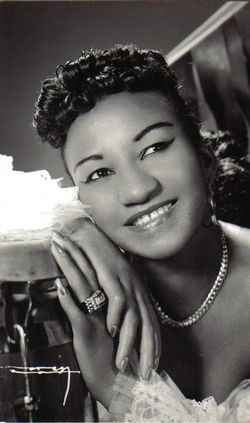The art of the bolero
When someone mentions the bolero, most of us probably think of the hypnotic Ravel piece in slow three-quarter time used in the 1979 Hollywood comedy 10 as a signifier for sex and at the 1984 Winter Olympics by the ice-dancing champions Jayne Torvill and Christopher Dean. That kind of bolero was hybridised from Spanish dances and turned into art music. The other type of bolero was the sort that turned up in Cuba in the late 19th century, in the form of romantic ballads whose popularity spread throughout Latin America.
As a boy growing up in a housing project in San Juan, Puerto Rico, the alto saxophonist Miguel Zenón heard boleros sung by the likes of Arsenio Rodriguez, La Lupe, Benny Moré and Sylvia Rexach: like French chanson, it was a music that transcended generations. His latest album, titled El Arte del Bolero, is a series of duets with the pianist Luis Perdomo — a member of his regular quartet — on the songs he heard back then, delivered with respect, understanding and affection.
Zenón, who was born in 1976, learnt the saxophone from the age of 10 and eventually won a place at a local music school. At 20 he left home with a scholarship to study at Berklee College in Boston, where he fell in with some interesting contemporaries from around the world. Since then he has become widely renowned not just as a wonderful improviser but as a composer, a bandleader, and a distinguished educator. For almost 10 years he has run a project called Caravana Cultural, taking free jazz concerts to young audiences and musicians in Puerto Rico’s rural areas. Grammy nominations and fellowships from the Guggenheim and MacArthur foundations have come his way.
I was first made aware of his playing on Not in Our Name by Charlie Haden’s Liberation Music Orchestra and several albums by the SFJAZZ Collective, an all-star band whose shifting personnel has featured the likes of Joshua Redman, Bobby Hutcherson, Mark Turner and Nicholas Payton. He is also a member of Guillermo Klein’s Los Guachos. In 2015 I invited him to play at Jazzfest Berlin with his quartet, a long-established line-up completed by Perdomo, the Austrian bassist Hans Glawischnig and the drummer Henry Cole, sharing the bill with Keith Tippett’s Octet. Their repertoire included some of the pieces from a recent album, Identities Are Changeable, in which the four-piece was augmented to become a big band and blended with the voices of immigrants; the music retained its potency in the reduced format.
Zenón is a wonderful jazz improviser, clearly influenced by Charlie Parker but with a voice of his own — a warm, fibrous tone throughout the registers with phrasing as elegant at fast tempos as on ballads. El Arte del Bolero is the latest of several albums in which he examines the music of his heritage, but it isn’t a Latin album as such: it’s a record of thoughtful, beautifully balanced explorations with the occasional fleeting venture into ‘outside’ flurries (on Rexach’s “Alma Adentro”, which he first recorded several years ago with an ensemble arranged by Klein) and bebop (Bobby Capó’s “Juguete”, from the repertoire of Cheo Feliciano).
Recorded (without an audience) at the Jazz Gallery in New York last September, this is music of great intimacy, the saxophone so close-miked that you can sometimes hear the soft slap of the pads, the two musicians working as one to create music that combines passion and sophistication in perfect proportions. I can imagine it becoming one of those albums that you keep close at hand, ready for those times when all you want is to hear something beautiful.
* Released via the Miel Music label, Miguel Zenón’s El Arte del Bolero is available on Bandcamp: https://miguelzenon.bandcamp.com/album/el-arte-del-bolero. The photograph of Zenón was taken by Camille Blake on stage at the Haus der Berliner Festspiele in 2015.



 Donald Trump’s attempt to turn the United States back into the country once shaped by Richard Nixon and J. Edgar Hoover took another step today when he signed a document reversing Barack Obama’s rapprochement with Cuba. There’s probably not much most of us can do about that, except maybe book a holiday there to replace the Americans who will no longer be able to travel to the island so easily, but it’s a good excuse to mention the reissue in expanded form of Introducing… Rubén González, one of the finest albums to come out of the Buena Vista Social Club phenomenon 20 years ago.
Donald Trump’s attempt to turn the United States back into the country once shaped by Richard Nixon and J. Edgar Hoover took another step today when he signed a document reversing Barack Obama’s rapprochement with Cuba. There’s probably not much most of us can do about that, except maybe book a holiday there to replace the Americans who will no longer be able to travel to the island so easily, but it’s a good excuse to mention the reissue in expanded form of Introducing… Rubén González, one of the finest albums to come out of the Buena Vista Social Club phenomenon 20 years ago. At some point in his career, Leandro “Gato” Barbieri became a sound. A great sound, for sure, its hoarse urgency bursting with Latin passion, but he learnt that he needed to do little more than apply it to the theme he wrote in 1972 for Bernardo Bertolucci’s
At some point in his career, Leandro “Gato” Barbieri became a sound. A great sound, for sure, its hoarse urgency bursting with Latin passion, but he learnt that he needed to do little more than apply it to the theme he wrote in 1972 for Bernardo Bertolucci’s 

